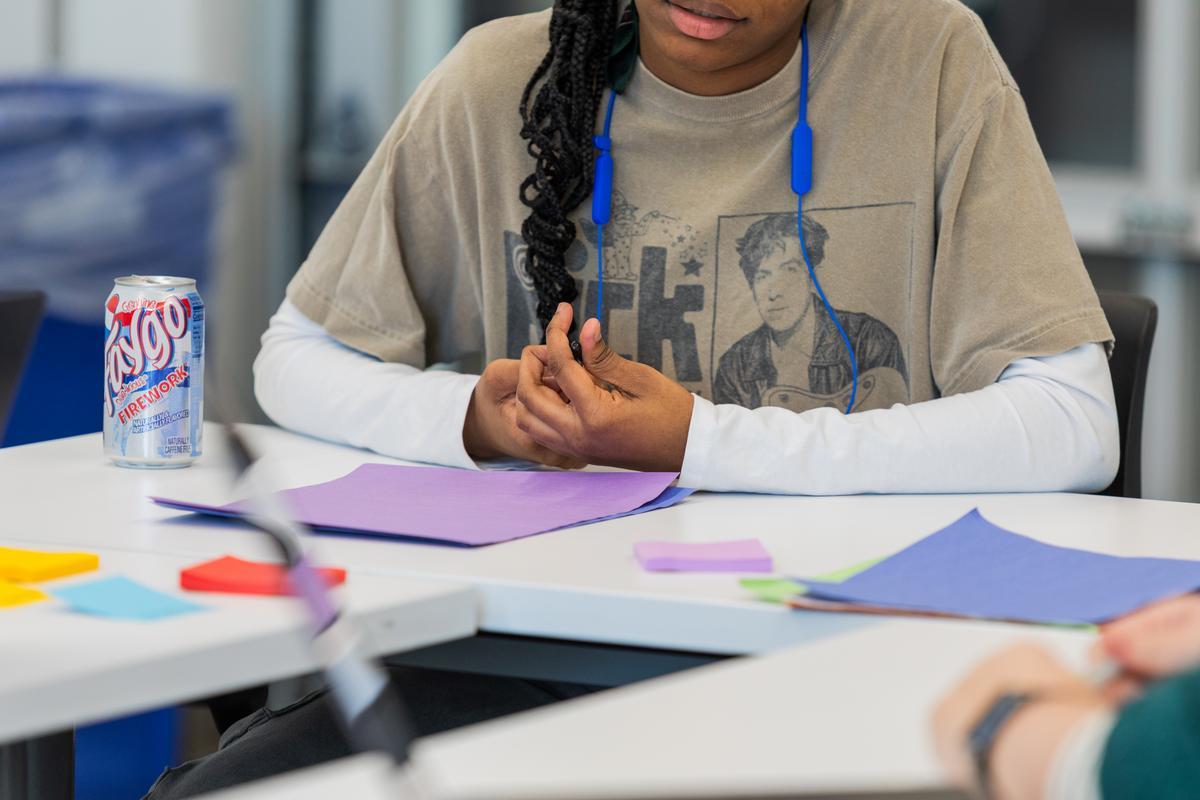Since 2019, The Columbus Foundation has led a human-centered design practice that helps nonprofit and social sector leaders gain a deeper understanding of our community’s assets, challenges, and needs. Done in collaboration with local nonprofits, city and regional partners, and members of the community, this innovative approach empowers individuals with firsthand experience of a community issue to help co-create solutions that promote positive change.
Heather Tsavaris, who leads The Columbus Foundation’s Designing for Community Well-Being work, says that providing opportunities for community members to participate in the problem-solving process helps yield deeper truths, shared understanding, and better solutions.
“The most effective way to develop sustainable and meaningful solutions to community challenges is to partner with people who are directly experiencing the challenges,” said Tsavaris. “Our efforts are centered on constantly learning from others, identifying barriers, and improving community well-being in partnership with community members.”
In 2024, The Columbus Foundation’s Designing for Community Well-Being team sought to better understand why some high school students in Columbus are chronically absent from school. In Ohio, chronic absenteeism is defined as a student missing 10 percent or more of the school year for any reason.
“The most effective way to develop sustainable and meaningful solutions to community challenges is to partner with people who are directly experiencing the challenges.”
HEATHER TSAVARIS, PRINCIPAL CONSULTANT, COMMUNITY WELL‑BEING: DESIGN & IMPACT AT THE COLUMBUS FOUNDATION
During the 2023-2024 academic year, the chronic absenteeism rate at Columbus City Schools was 54.5 percent—the highest rate among large urban schools in Ohio. By comparison, the statewide chronic absenteeism rate was 25.6 percent that same year. Chronic absenteeism is linked to negative outcomes on students’ academic performance and overall well-being, including increased risk of dropping out of school, social disengagement, and challenges securing future employment opportunities.
To gain a deeper understanding of this issue, the Designing for Community Well-Being team recruited four high schoolers, who were or had previously been chronically absent from school, to join the project as co-designers. Additionally, more than two dozen high school students who had experience with chronic absenteeism were invited to participate in interviews to share their perspectives and experiences.

In 2024, four young people joined The Columbus Foundation's Designing for Community Well-Being team as co-designers to better understand why some high school students in Columbus are chronically absent.
Through these conversations, young people provided valuable insights that challenged assumptions and shed light on the experiences of many students in our community. For instance, participants shared that they felt shame around not showing up to school, but often felt like they had to overcome too many barriers—including transportation, finances, and safety—to attend school full-time. Others felt like they had already missed too much school to get back on track for the academic year, or that the lack of engagement around learning discouraged them from attending school every day.
In collaboration with the young participants, the Designing for Community Well-Being team worked on developing prototypes to test what kind of interventions might make an impact for chronically absent high schoolers, including more flexible learning options and more opportunities to engage with school guidance counselors. Importantly, the team continues to use this work to help inform local and state efforts to address chronic absenteeism.
“The young people who participated in this project are the experts of their own experiences,” said Tsavaris. “Their willingness to share their perspectives helped us gain a better understanding of the challenges they face and, together, imagine solutions that can make a lasting difference.”